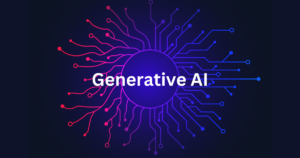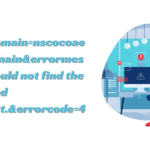How AI is Simplifying the Image to 3D Model Conversion Process
Imagine turning a simple 2D image into a lifelike 3D model with just a few clicks. It sounds like something out of a sci-fi movie, right?
Thanks to artificial intelligence advancements, this futuristic dream is now a reality.
Whether you’re an artist, designer, or just someone who loves playing with technology, AI is making the image-to-3D model conversion process easier and more accessible than ever before.
Why AI Matters in 3D Modeling
Artificial intelligence isn’t just a buzzword—it’s revolutionizing industries, including 3D modelling.
Traditional methods of converting images into 3D models involved painstaking hours of manual work.
Artists had to sketch, sculpt, and refine every tiny detail. Enter AI, and suddenly, what used to take days or even weeks can now be accomplished in mere moments.
The Magic of Automation
AI algorithms analyze 2D images, identifying shapes, textures, and depth.
This process, known as photogrammetry, allows the software to generate a 3D model that closely resembles the original image. No more squinting at screens or endless tweaking of vertices!
Cost-Effective Solutions
Hiring a professional to create 3D models can be expensive.
AI tools offer a cost-effective alternative, making image-to-3D models accessible to smaller businesses and independent creators. It’s like having a team of expert modellers at your fingertips—without the hefty price tag.
Democratizing Creativity
One of the most exciting aspects of AI in 3D modelling is how it democratizes creativity. You don’t need a degree in computer graphics to create stunning models.
With user-friendly interfaces and intuitive controls, anyone can turn their ideas into 3D masterpieces.
How AI Works in Image to 3D Model Conversion
Are you curious about the nitty-gritty of how this technology works? Let’s break it down.
Step 1: Image Analysis
The AI algorithm starts by analyzing the 2D image. It looks for visual cues like edges, contours, and colours to understand the shapes and structures within the image. This step is crucial for ensuring the final 3D model is accurate and detailed.
Step 2: Depth Mapping
Next, the AI generates a depth map, adding the image’s third dimension. Think of it as creating a topographical map that shows the highs and lows, giving your model depth and volume.
Step 3: Texture Mapping
Once the basic structure is in place, the AI applies textures to the model. Texturing involves wrapping 2D images around the 3D framework to give it a realistic appearance. This step transforms a bland, grey model into something visually stunning.
Step 4: Refinement
Finally, the AI refines the model, smoothing out rough edges and adding fine details. This step ensures the model is ready for use in various applications, from video games to virtual reality.
Real-World Applications of AI in 3D Modeling
AI-powered 3D modelling isn’t just a cool tech trick—it’s being used in various fields to solve real-world problems and create new opportunities.
Gaming and VR
The gaming industry has embraced AI to create lifelike characters and environments. With AI, developers can generate vast, detailed worlds without requiring an army of artists.
This technology enhances virtual reality experiences, making them more immersive and engaging.
Architecture and Design
Architects and designers use AI to convert blueprints and sketches into 3D models.
This allows clients to visualize buildings and interiors before construction begins, making it easier to spot potential issues and make informed decisions.
Healthcare
In healthcare, 3D modelling is used for everything from planning surgeries to creating prosthetics. AI helps doctors and researchers create accurate models of organs and structures, improving patient outcomes and advancing medical research.
AI is revolutionizing the world of 3D modelling, making it faster, cheaper, and more accessible than ever before. From gaming to healthcare, the applications are endless, and the future is full of possibilities. If you’re eager to explore the potential of AI in 3D modelling, now is the perfect time to start. Whether you’re a hobbyist or a professional, the tools and technology are at your fingertips. Happy modelling!

















